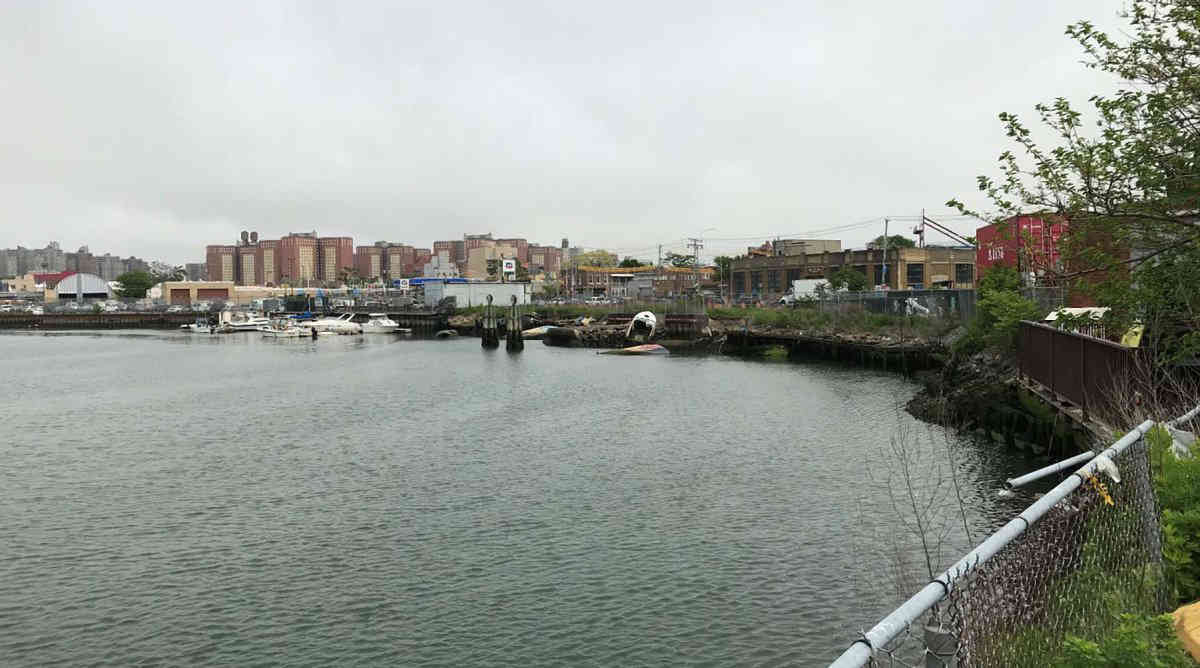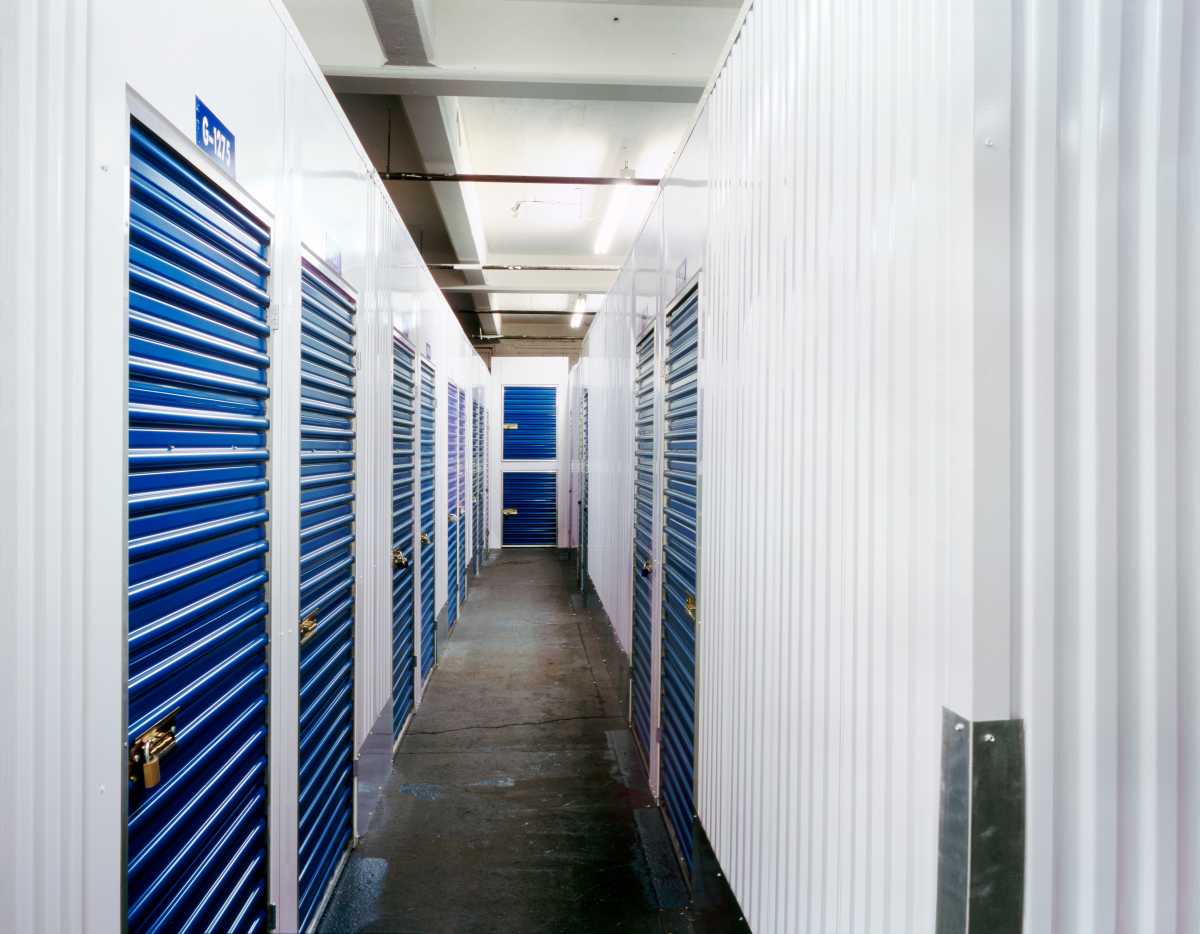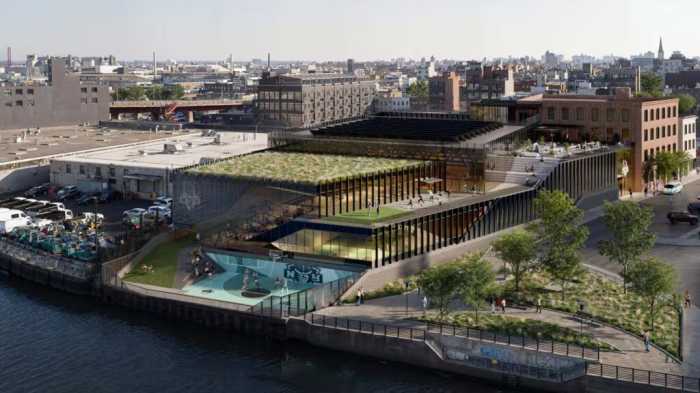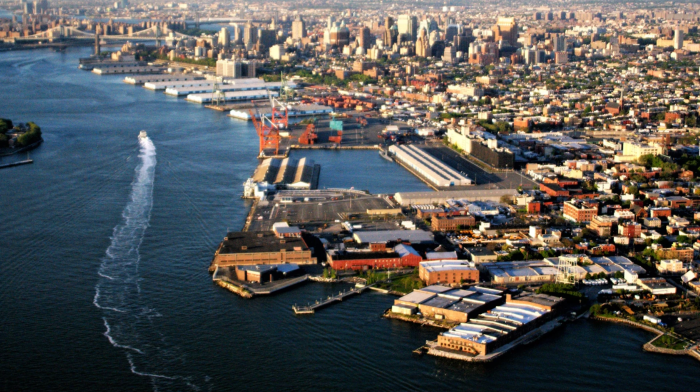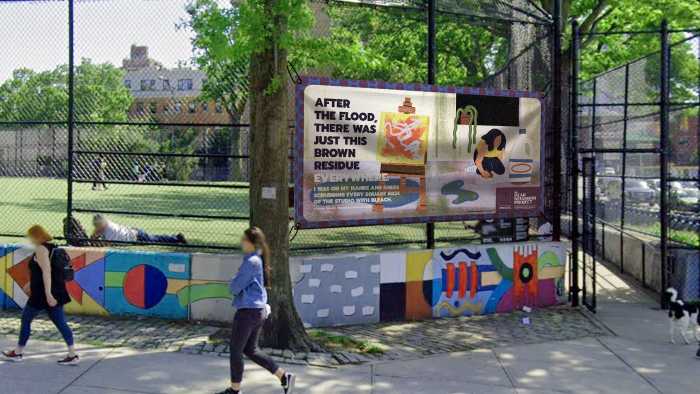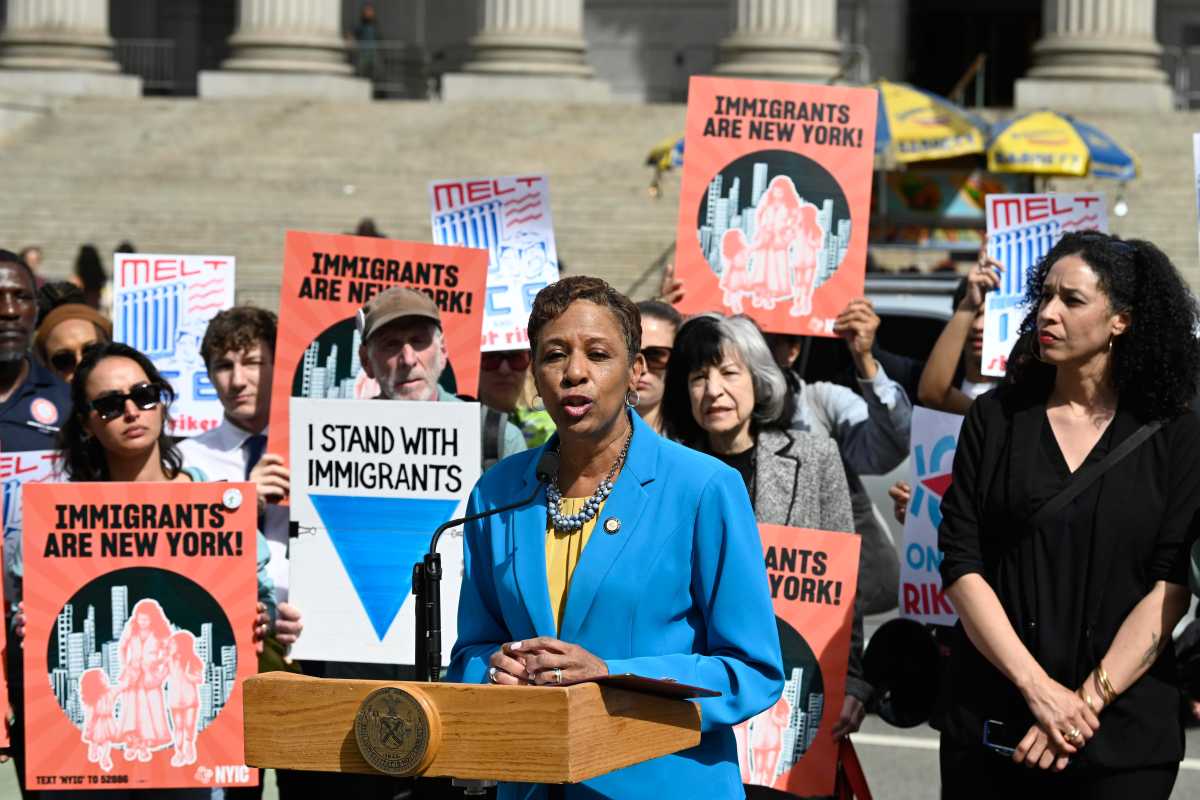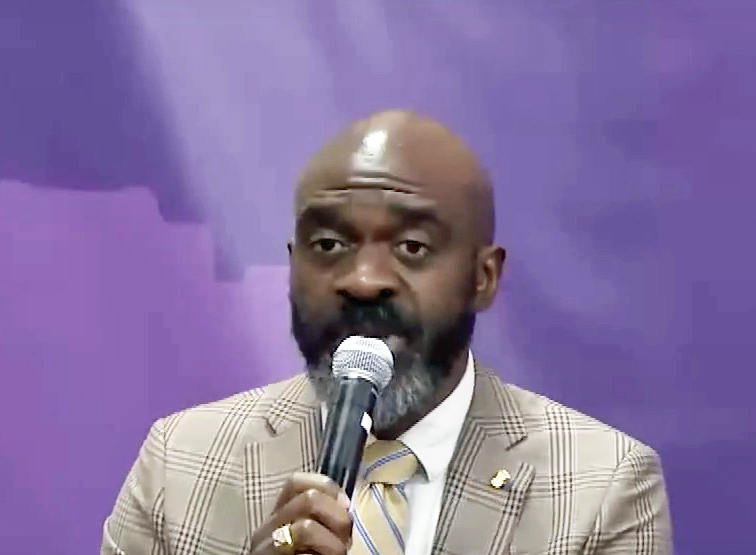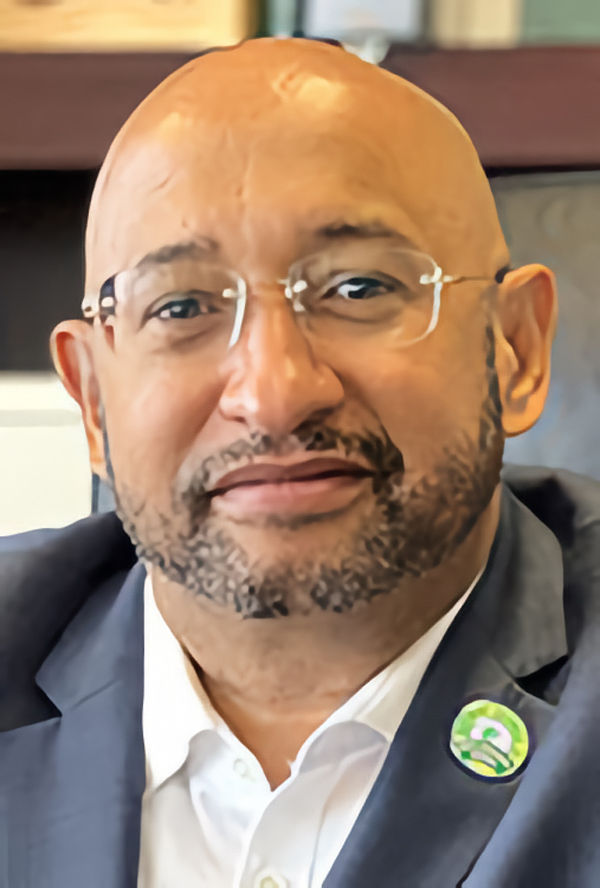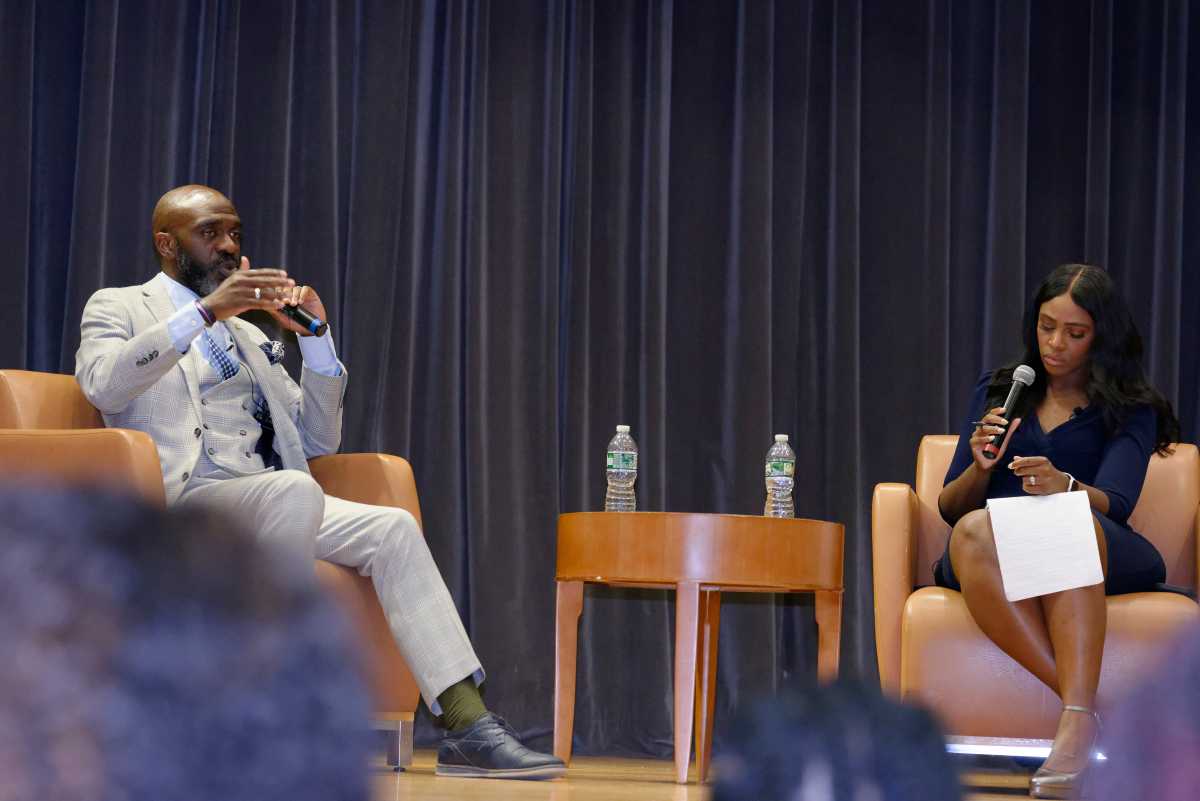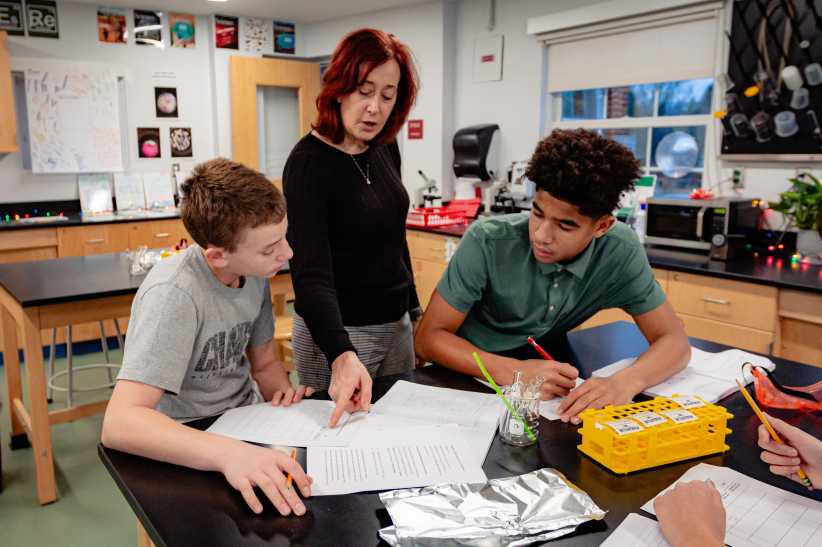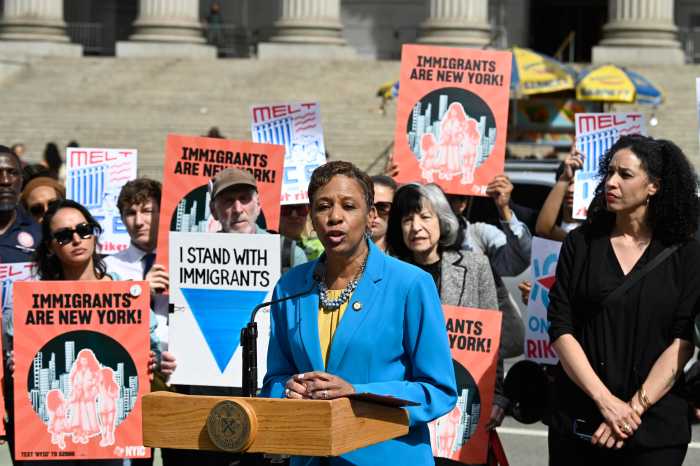Call it a wall of silence.
The city should have clued in locals to the details of a plan to rebuild part of the wall along the shoreline of Coney Island Creek before inviting companies to bid on the $47-million project, according to one environmental activist, who added that the agency’s apparent secrecy made her skeptical about its intentions.
“We need to know what’s going on — if you have something going on down here and you’re going to issue a request for proposals and do work down here, we shouldn’t have to find out about it by chance,” said Brighton Beach resident Ida Sanoff. “When they do things like this it doesn’t do anything to foster a relationship and it makes you wonder if these people are trustworthy, if they don’t even think of you enough to keep you in the loop and stay transparent.”
The project will repair and improve the bulkhead — a vertical wall that reinforces the banks of a waterway to minimize flooding and erosion — along the creek from Cropsey Avenue to W. 23rd Street. The work is part of a larger strategy to improve resiliency in the neighborhood following Hurricane Sandy, according to a spokesman from the Economic Development Corporation, who said the bulkhead project was first identified in the agency’s Coney Island Creek Resiliency study, released in 2016.
The agency will allocate $32 million in city funds for the project, and the federal Housing and Urban Development Department will provide another $15 million from the disaster-recovery grant it originally allocated to the city after the superstorm.
The agency posted the request for proposals — which were due Sept. 14 — on its website on July 29, and held an information session at its Manhattan office on Aug. 6, which 40 reps from design and engineering firms attended to learn about the scope of the project. The agency expects that construction will begin in 2020 and wrap up two years later, according to the presentation given at the early August meeting.
But one local said he didn’t even find out about the request for proposals until weeks after the info session, when agency reps included a link to it in an e-mail newsletter last month.
“I would have gone to that Aug. 6 meeting, but I didn’t find out about it until the end of August,” said Sea Gate resident Charlie Denson, who is also the executive director of the Coney Island History Project, where he organized an exhibit on the past, present, and future of the creek this summer and is also working on a book and documentary about the waterway.
A spokesman from the Economic Development Corporation did not respond by press time to an inquiry about when the link to the request for proposals was included in the agency’s e-mail newsletter. But the spokesman said that the agency prioritizes community engagement in all of its projects typically by briefing local elected officials, stakeholders, and community boards before releasing requests for proposals.
The spokesman said that agency reps briefed local elected officials on the project before releasing the request for proposals in July, and then reached out to Community Board 13 in August — when most boards don’t meet — to schedule a meeting to discuss the project.
That public meeting will take place at the board’s environmental committee meeting next month, on Oct. 17 at 7 pm at the board’s office on the third floor of 1201 Surf Ave. at W. 12th Street.
The board’s district manager acknowledged that the agency is not obligated to talk to the board before issuing requests for proposals. But he said agency reps could have gotten a sense of locals’ concerns about the creek if they had come to the community before deciding the details of the project.
“It’s not that they have to come to us, but it would have been nice if they came to us,” said Eddie Mark. “It would have given them a better picture of what’s happening in the creek.”
Denson added that he didn’t think the agency had nefarious aims, and chalked up the omission as an honest mistake. But he agreed with Mark’s point that community members should have had a say in the design of the project before details were released to the public.
“I think it was some oversight or incompetence, but this is a real opportunity to build a living shoreline, and as part of the request for proposals there should be a stakeholder outreach,” he said. “There should be input [from the community] but the input is coming after the whole design.”


